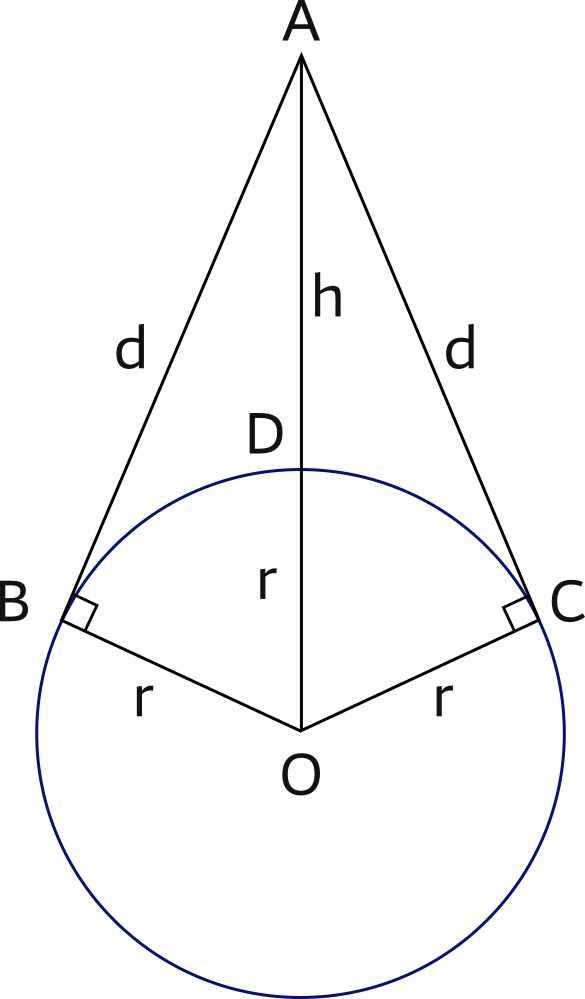Mathematics: Distance of horizon

AD = h is the height of eye above the earth.
DO = BO = CO = r (radius of the earth).
Any angle between a tangent line to a circle and the radius of the circle is a right angle.
Since we have a right triangle ABO where AB = d,
AO = h+r and
BO = r,
we can find a formula for d in terms of h:
where
r is approx. 3440.1 NM
Distance of horizon example
Let the eye height (h) be 4 metres = 0.0022 NM; find the distance in NM of the geometrical horizon.
d = 3.89 NM (geometrical)
The distance of the visible horizon as found tabulated (e.g. in nautical almanacs) is greater (4.2 NM) due to atmospheric refraction.
The semi-empirical function used is
where ρo accounts for refraction (0.8279).
Next math chapter: Sextant angles,
or back to chapter 5 of the navigation course,
or learn to sail bareboat, skippered instruction or at RYA ASA sailing schools in Greece and beyond…